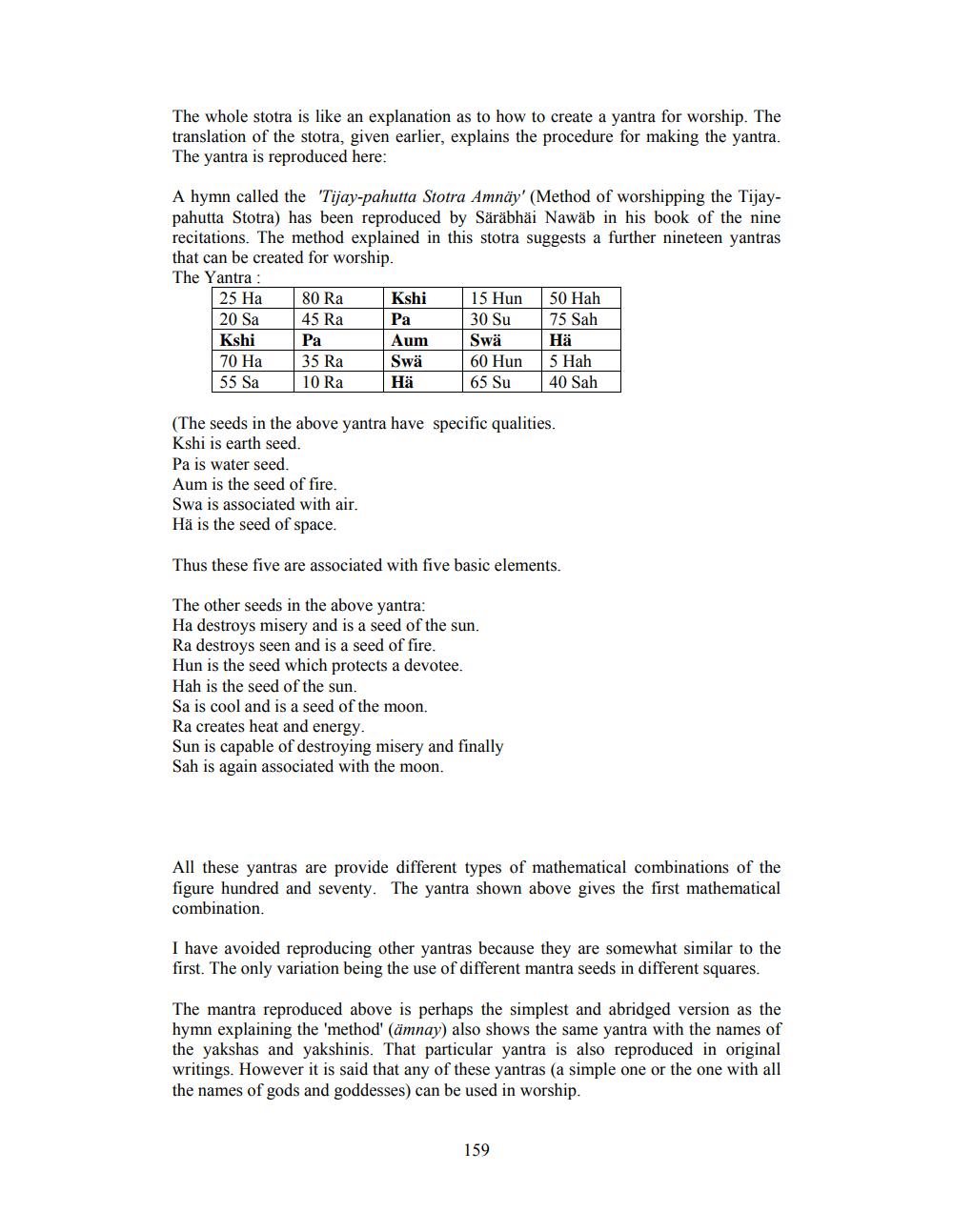________________
The whole stotra is like an explanation as to how to create a yantra for worship. The translation of the stotra, given earlier, explains the procedure for making the yantra. The yantra is reproduced here:
A hymn called the "Tijay-pahutta Stotra Amnäy' (Method of worshipping the Tijaypahutta Stotra) has been reproduced by Säräbhäi Nawäb in his book of the nine recitations. The method explained in this stotra suggests a further nineteen yantras that can be created for worship. The Yantra:
25 Ha 80 Ra Kshi 15 Hun 50 Hah 20 Sa 45 Ra Pa
30 Su 75 Sah Kshi Pa
Aum Swä Hä | 70 Ha 35 Ra Swä 60 Hun 5 Hah 55 Sa 10 Ra
65 Su 40 Sah
(The seeds in the above yantra have specific qualities. Kshi is earth seed. Pa is water seed. Aum is the seed of fire. Swa is associated with air. Hä is the seed of space.
Thus these five are associated with five basic elements.
The other seeds in the above yantra: Ha destroys misery and is a seed of the sun. Ra destroys seen and is a seed of fire. Hun is the seed which protects a devotee. Hah is the seed of the sun. Sa is cool and is a seed of the moon. Ra creates heat and energy. Sun is capable of destroying misery and finally Sah is again associated with the moon.
All these yantras are provide different types of mathematical combinations of the figure hundred and seventy. The yantra shown above gives the first mathematical combination.
I have avoided reproducing other yantras because they are somewhat similar to the first. The only variation being the use of different mantra seeds in different squares.
The mantra reproduced above is perhaps the simplest and abridged version as the hymn explaining the 'method' (ämnay) also shows the same yantra with the names of the yakshas and yakshinis. That particular yantra is also reproduced in original writings. However it is said that any of these yantras (a simple one or the one with all the names of gods and goddesses) can be used in worship.
159




